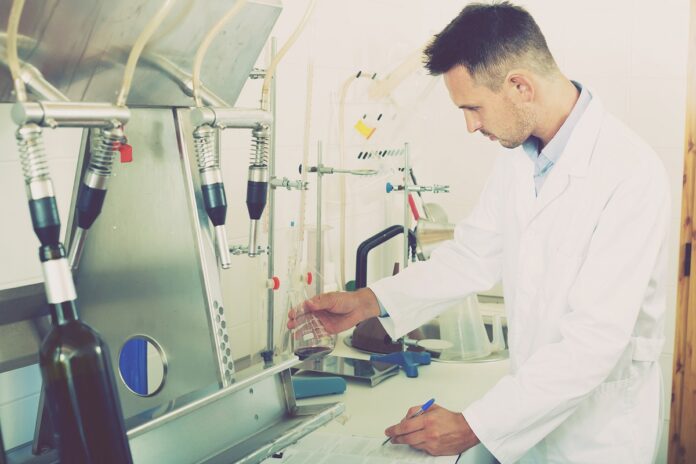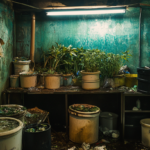Preparing, implementing, and maintaining a waste management plan is critical in any commercial operation that generates waste. For cannabis operations, the requirements are especially complex. In addition to distinguishing hazardous from non-hazardous waste, the generator must ensure all cannabis-containing material is rendered beyond recognition and all waste is meticulously accounted for.
While complex, proper cannabis waste disposal is not impossible. The key is understanding the protocols that are unique to the industry.
Identify waste streams
The first step in preparing any waste management plan is to identify, characterize, and profile the particular streams of waste generated at the subject facility. Hazardous waste includes the subcategory universal waste such as batteries, light bulbs, and electronic materials.
Understanding what types of waste will be generated, and in what quantities or volumes, is crucial. These factors determine how the waste management plan will be structured and whether any special permitting or notification is required.
Ultimately, the generator is responsible for determining whether its waste is hazardous. As a rule of thumb, waste is considered hazardous until proven non-hazardous, and most generators follow this definition to reduce liability.
Each hazardous waste stream requires a profile outlining physical and chemical characteristics (i.e., physical state, flashpoint, BTU value, etc.) to determine proper disposal methods. Generators often hire third-party consultants or waste service providers to assist with the complexities of waste identification, characterization, and profiling.
Proper identification is critical because treating hazardous waste as non-hazardous is a serious violation under Environmental Protection Agency and local enforcement regulations. Improper disposal also violates the federal Toxic Substances Control Act (TSCA).
In the commercial cannabis industry, common streams of waste include but are not limited to:
- Expired or recalled product (flower, edibles, topicals, tinctures, vapes, etc.); considered non-hazardous.
- Plant material from cultivation (flower, stalks, leaves, root balls); non-hazardous.
- Process liquids from extraction or distillation (ethanol, acetone, etc.); hazardous.
- Contaminated lab debris (gloves and wipes with solvent residues); hazardous.
- Disposable vape pens with internal lithium-ion batteries; universal waste.
- High-intensity discharge (HID) lamps with ballasts; universal waste.
Some businesses choose to manage all waste as hazardous to reduce liability. There are pros and cons to this approach. On one hand, there’s less risk of incurring fines and penalties due to regulatory oversight. On the other hand, businesses that take the “all hazardous” approach are subject to higher disposal costs and potentially put themselves into a higher tier of regulation.
Storage
Once waste streams have been identified, the generator must determine where they will be accumulated and stored. This requires a detailed understanding of the commercial industrial processes that generate the waste, as well as the layout and flow of the facility.
In testing laboratories, for example, automated equipment (i.e., HPLC) that utilizes small volumes of solvent during analysis may automatically dispense waste solvent through a hose into a drum beneath the equipment. Cultivation facilities may situate large drums throughout harvest rooms in which staff deposit plant material waste.
Accumulation can be done in either a main waste storage area or a satellite collection area. Satellite areas often are set up to integrate more conveniently with facility layout. In the example of the testing lab, if the HPLC waste solvent is collected in a five-gallon carboy and then routinely transferred into a fifty-five-gallon drum, the carboy would be the satellite accumulation area and the fifty-five-gallon drum would be the main waste storage area.
Selecting the proper container for the type of waste is important. Acids may corrode metal drums over time, resulting in leaks. Selecting the proper location for the main waste storage area also is important. Main storage should be somewhat centrally located, accessible, and constructed with durable finishes. The main waste storage area should have a secondary containment system to contain potential leaks or spills. Specific to the cannabis industry, the main waste storage area should be in a secured, limited-access area, on the licensed premises, and under video surveillance.
Labeling
Waste containers must always be labeled and closed, except when being emptied or filled. This is especially important for hazardous waste, though the rule is applicable to all commercial-industrial waste stored in drums on the premises. For example, a drum may be labeled “hazardous waste” and contain the profile of the specific waste stream.
Labels are intended to communicate hazards to employees and staff as well as to document when waste accumulation starts. Hazardous waste accumulation and storage is time-limited, so accurate labeling is crucial. In addition to labeling the containers themselves, generators must provide labeling at the main and satellite accumulation areas.
Adequate labeling requires more than simply a hazardous-versus-non-hazardous distinction, because different forms of hazardous waste have different chemical properties and physical characteristics. A retail business may be required to discard used solvent wipes separately from disposable vape pens.
However, if different hazardous waste streams contain compatible materials or chemicals, they may be stored together. For instance, common solvents like ethanol, acetone, and isopropanol are compatible because they are chemically and physically similar. When creating the waste profile, the generator must identify all the constituents present in each storage container.
Handling and disposal
The next step in any waste management system is to identify a procedure for handling, transporting, and disposal. Most generators contract with licensed third-party waste service providers to collect, document, and transport the waste to the proper solid waste facility (non-hazardous) or treatment storage and disposal facility (TSDF) for hazardous waste.
In some jurisdictions, generators are free to manage the treatment and disposal of non-hazardous waste on their own. They can develop a written waste management plan, familiarize themselves with all applicable regulations, and write an operating plan that addresses the regulations and how they intend to follow them. But this applies only to non-hazardous waste. Generators must contract with a licensed service provider to compliantly manage hazardous waste. Applying on-site rendering methods to hazardous waste is considered treatment and may be classified as an unpermitted activity. Likewise, self-hauling hazardous waste could be a violation, as specific registration is required for entities that transport hazardous waste on public roadways. Penalties vary by state and locality, but they can be severe. In California, for example, the generator may face a maximum penalty of $500,000 and five years in prison.
Waste generators must contract with a licensed service provider to compliantly manage hazardous waste.
As with all things cannabis-related, state regulators require documentation of hazardous waste disposal. Chain-of-custody documentation is needed from the time waste leaves the generator facility until it is received at the TSDF facility, which commonly is referred to as “cradle-to-grave” tracking. Documentation must be transmitted to regulatory agencies.
Ultimately, generators are responsible and liable for their hazardous waste from the cradle to the grave, regardless the actions provided by their contracted service provider. If hazardous waste has been improperly documented or disposed of, it falls back on the generator. Even after hazardous waste has been sent to a landfill, the generator continues to own it indefinitely. For these reasons, it is critically important that the generator properly vet their vendors to ensure compliance with all applicable local, state, and federal regulations.
For most commercial businesses, only hazardous waste requires special treatment. But for commercial cannabis businesses, all waste—including non-hazardous waste—is heavily regulated. In California, cannabis waste is regulated by the Bureau of Cannabis Control (BCC) and the Manufactured Cannabis Safety Branch (MCSB). Individual municipalities also reserve the right to impose their own rules and regulations. Requirements in San Jose, California, for example, are more stringent than the state’s.
The most notable regulations for non-hazardous cannabis waste removal are:
- Waste must be stored in a secure, limited-access area on the licensed premises, preferably under constant video surveillance.
- The waste must be weighed and tracked both on-site and at its destination.
- The waste must be rendered “unrecognizable and unusable” on-site prior to removal.
Unfortunately, there is no set standard for what constitutes unrecognizable and unusable. The BCC judges on a case-by-case basis. While penalties for improper treatment of cannabis waste aren’t nearly as severe as for hazardous waste, generators still must be diligent. Improper waste management may result in loss of licensure.
After the waste has been weighed and rendered, it must be removed. For most streams, there are several acceptable avenues for disposal.
Waste companies that choose to be environmentally conscious or sustainable will choose recycling over landfill. This is often referred to as waste diversion. Although recycling (i.e., composting, fuels blending, waste-to-energy) can be more expensive than landfill removal, it comes with certain benefits:
- It reduces a company’s overall carbon footprint.
- It can have beneficial tax implications, such as depreciation credits, rebates, and tax exemptions.
- It ends the chain of custody. The generator no longer is responsible for hazardous waste after its disposal.
Establish a program
It’s important to build a team of individuals to help implement and maintain a waste management program, making sure the program is utilized and remains relevant with growing operations.
Generators often appoint a designated representative or program coordinator. This person is responsible for managing the team, assigning duties, coordinating safety training, assigning personal protective equipment, and overseeing the program as a whole. Ideally. the program coordinator will have completed the Occupational Safety and Health Administration’s forty-hour HAZWOPER training.
For hazardous waste, things like routine waste storage area inspections, relevant environmental reporting, recordkeeping, and spill response are required. Personnel who handle or sign off on hazardous waste manifests must have specific training and certification.
Even if non-hazardous waste theoretically can be managed in-house, a professional cannabis waste disposal provider is an invaluable asset. The track-and-trace system requires every pound of cannabis be accounted for, and third-party waste management provides an added level of reassurance for businesses constantly under the watchful eye of regulators.
For example, if a generator records seventy pounds of waste and then renders it unrecognizable and unusable, they usually will be left with a weight that’s significantly less than what they started with. They will be unable to prove the original weight of the discarded materials. But if they hire a licensed waste management company, the provider can confirm the weight prior to rendering and then document the destruction of the waste, ensuring an official record from start to finish.
Whether you manage waste management yourself or hire a service provider, make sure you take the time to familiarize yourself with the regulations and requirements.

Jonathan Lee is co-founder and chief executive officer at Gaiaca Waste Revitalization, which offers compliant waste treatment and disposal. He gained more than two decades’ experience in commercial real estate development and entrepreneurship after graduating cum laude from the University of California Los Angeles with a bachelor of arts degree in economics and a minor in urban planning.











